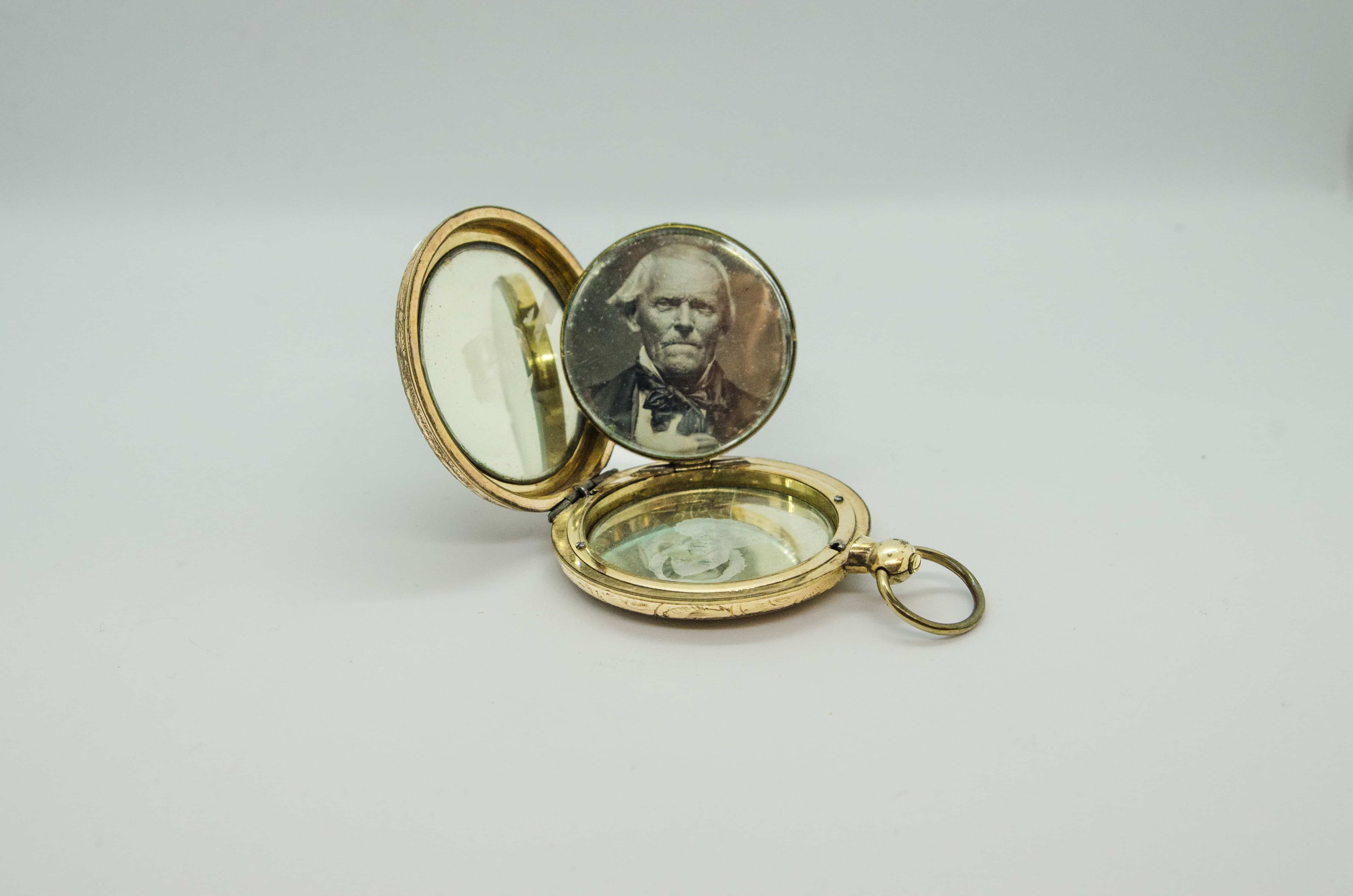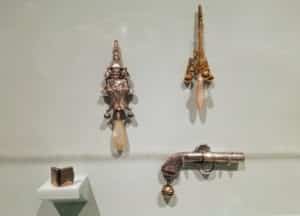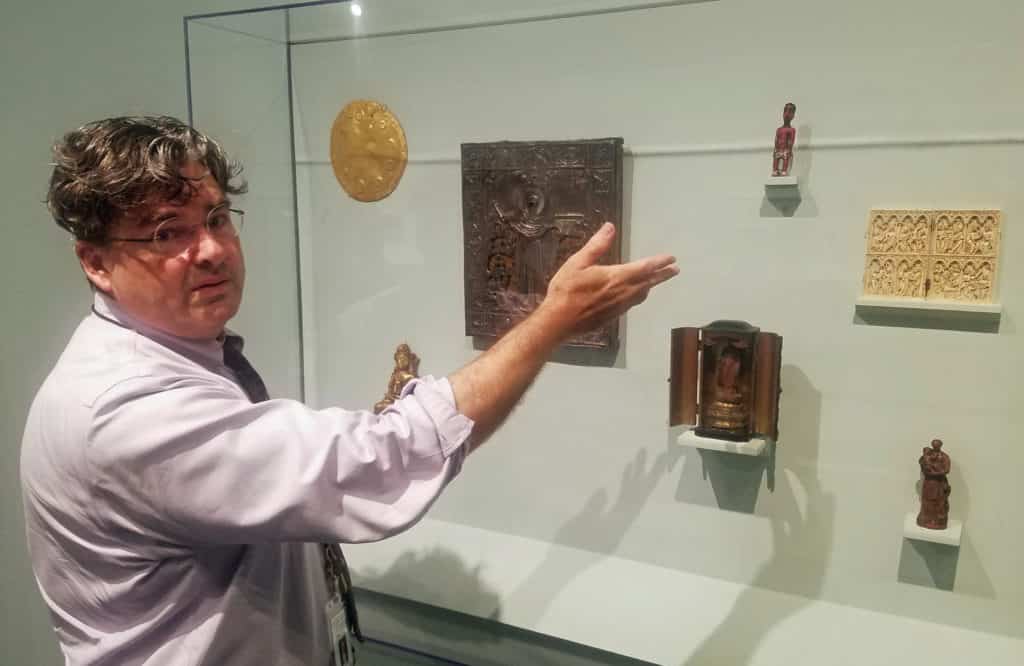It’s a small world at the Museum of Fine Arts St. Petersburg

The Museum of Fine Arts St. Petersburg is a big place. A big building with big doors, big galleries, big paintings and big sculptures from artists who all had big dreams.
This week, a new MFA exhibit focuses on tiny things. Not insignificant – not by a long shot – just diminutive. Up Close and Personal is an exhibition of 50-some objects from the museum’s vast collection, none of which have been put on display before.

This Japanese carved fledgling bird dates from the early 20th century. Photo provided.
Some are exquisitely hand-made objects d’art, others are more practical pieces of lives gone by.
They’ll all fascinating. And they’re all really, really little.
“I’ve been here for a year and a half, and one of the things that I’ve been really interested in is finding out what’s in the collection,” explains Stanton Thomas, the museum’s Curator of Collections & Exhibitions.
“And there’s no better way to find out what’s in the collection than to do an exhibition. When I was looking in storage, it struck me that we have a lot of really small, intimate objects that don’t get a lot of attention simply because of their scale. And they’re from all different cultures, all different time periods.”
The MFA, for example, has an extensive photography collection, some 13,000 pieces, including primitive daguerreotypes and tintypes from the early to mid 1800s. These are images printed on glass and other materials, before photo paper was developed and became the standard.
There’s an entire display case in Up Close and Personal devoted to miniature daguerreotypes, including a gold pocketwatch that dates from, approximately, the 1840s. The winding stem is attached.
There’s no watch inside – instead, there are three round photographic images on glass.
“Unfortunately, we don’t know who the people depicted are,” Thomas says. “We’re assuming it’s a man, wife and son.”
When it was gifted to the museum in 2010, the original green velvet case was included. “So it was a very costly item, and would have probably been worn, with a watch, on a watch chain with a fob that would have been laced through someone’s clothes. And at any time of the day, they could pull those images out and look at them.”
Two 1950s tintypes, set in a fold-open case so they face one other like a tiny, portable family album, feature a young boy, post-mortem, dressed formally. This was a common practice at the time, to keep as a cherished memento of a dead family member.
In the second portrait, he’s joined by a woman who was most likely his mother, very much alive.
Another miniature tintype, in a case crafted from gutta percha, shows a woman holding what may very well be a dead baby.
“We can tell you exactly when all of these objects came into the collection, and for the most part we can tell you who gifted them to us,” Thomas explains. “In very rare instances, with daguerreotypes, people gift them to us from their family, so we know who they are. For the most part, unfortunately, these people’s names are lost.”
The exhibit includes numerous examples, from various cultures and time periods, of religious iconography. There’s a wood, metal and guilding Japanese shrine, or zushi, which allowed the owner to travel under the protection of their deity. A hollow Tibetan Boddhisattva, made of gilt bronze, blue gouache and precious stones, was clearly sealed on the bottom long ago – it is believed that prayers or other holy items are inside.
A five-inch human figure from the Baule people of West Africa is a Spirit Spouse, possibly worn as an amulet by a child.
Thomas is thrilled to display examples of detailed portraiture on lockets and other small pieces of jewelry. “People who painted miniatures used a variety of amazing materials,” he enthuses. “They tried using earwax, thinking perhaps it would be quite resilient.
“They also painted with really tiny brushes, as you can imagine. In some cases they even used mouse-whisker brushes in order to paint in such extraordinary detail on such a tiny, tiny level.”
Three mid 19th century baby rattles, from France, are displayed together. Two have handles made from abalone, or mother of pearl, which was thought to have magical qualities (it was also good for teething).
Thomas points to a third rattle in the case, forged from sterling silver. It looks like a tiny pistol.

In this case: The British vinaigrette (left), and the French baby rattles. Photo by Bill DeYoung.
“One of the things that kind of disturbs me about this is it’s a rattle – as you can see, it has a bell on it – but it also is a whistle. Which means to get the whistle to work, you had put the gun in your mouth! I don’t think they thought that design through very well.”
Up Close and Personal includes exquisitely hand-carved objects such as Japanese men’s kimono accessories called inro and netsuke; calling card cases made of tortoise shell, brass and ivory, from both Great Britain and China; and a bronze wine cup dating from 12th-9th century B.C. Greece.
Also from Great Britain, circa 1900, comes a sterling silver vinaigrette – shaped like a suitcase, it’s about as tall as a silver dollar.
“It was a tiny container for a sponge,” explains the curator. Inside, tiny grips held the sponge in place.
“The sponge would have been soaked in vinegar. And during the time period where women had to wear stays and corsets in order to make their waists thin, a lot of times they would use these if they were feeling faint. They would open up the vinaigrettes and smell them, and that would kind of revive them.”
Did the vinaigrette work? Thomas has an idea about that.
“My wife and I had an historic house in Memphis, where we used to live,” he explains. “And we’d always laughed about vinaigrettes – ‘how stupid, who would ever use that?’
“We had the home open for a tour, and we were both dressed in period clothes. She was wearing corsets, and stays, and a hoop skirt.
“She ran up the stairs, and almost fainted. And she was like, ‘I wish I had my vinaigrette!’”
Museum details are here.

Curator Stanton Thomas narrates the religious miniatures case. Photo by Bill DeYoung.







